Although they cover over 70% of our planet, only 0.6% of the world oceans are protected. It is estimated that we only know about 1 in 10 species in the ocean, which is unsurprising given that 90% of the ocean is more than half a mile deep and still remains largely unexplored. How might technology help us discover, understand and protect the vulnerable ecosystems below the waterline?
Marine Conservation is a fast-growing group in the WILDLABS community, capturing a wide variety of tech expertise within its member base, including those working with bioacoustic gear and hydrophones, AUVs and drones, sensors, machine learning, and more. By bringing together WILDLABS members from so many areas of conservation tech, the Marine Conservation group is the perfect place to collaborate on big, complex issues like marine biodiversity monitoring, coral reef health, plastic pollution, and sustainability.
The Marine Conservation group forum is also your place to chat about and solve the challenges unique to using conservation technology in marine environments. Whether you're struggling with deep-sea connectivity or salt water impacting gear longevity, or looking for remote solutions for long-term reef monitoring or biologging data collection, this group wants to help you explore the possibilities!
Check out some of the key marine conservation tech resources, conversations, and virtual events from across the WILDLABS platform:
Tutorials and Talks to Watch on Demand:
- Virtual Meetups: Developing cost-effective, open-source marine megafauna tracking, Jake Levenson
- Tech Tutors: How do I use open source remote sensing data to monitor fishing?, Max Schofield
- Virtual Meetups: eDNA for Aquatic Biodiversity, Alice Valentini
Case Studies, Tools, Research, and News:
- Southern Right Whales & Genome and Satellite Technology, Emma Carroll | eDNA & genomics, satellite data, biodiversity monitoring, climate change
- Building Experts Into AI, Whale Seeker | Machine learning, marine conservation, AI ethics
- Using AIS Data to Investigate the World’s Fishing Ports, Max Schofield | Remote sensing, data visualisation, fishing monitoring
- Small-scale fisheries and tech resources, Dan Steadman | Fishery monitoring, webinars, best practices
- Press Release: BAS Giant Iceberg Mission, British Antarctic Survey | Climate change, AUVs, remote sensing
- Case Study: Thermal imaging, drones, and loggerhead sea turtles, Megan Ossmann | FLIR, Duo Pro R camera, drones
- eDNA sampling to detect invasive snails in shipping ballast water, Gavin Shelton | Invasive species, eDNA, shipping
- Sustainable Fishing Challenges: Fish Catch Monitoring, Dan Steadman | Biologging, sensors, fishing monitoring
Conversations and Questions:
- Satellite tags for marine turtle recommendations | Alasdair Davies
- Calling all hydrophone users! | Team Open Acoustic Devices
- How difficult is it to build a buoy and constrain it in place? | Lindy Knowles
- Methods to detect Derelict Fishing Gear | Nandini Mehrotra
- Drone Mapping for Algal Blooms? | Harold Tay
- Minimising habitat impact of trawling gear | Dan Steadman
- Estimating carbon from 3d models of mangroves | Mark Brown
- Can we detect gillnets in turbid water? | Aurélie Shapiro
- New low cost DIY temperature loggers for reef monitoring | Harold Tay
- Machine learning to detect fish bomb blasts | Jamie Macaulay
Header Image: Emma Vogel
The partnership will support the Global South with the development, planning and management of marine protected areas (MPAs) in the high seas.
22 September 2023
Careers
The Charles Darwin Foundation for the Galapagos Islands (CDF) is recruiting a Senior Spatial Ecologist to join our shark research team and strengthen the ongoing long-term research on shark population ecology and...
24 August 2023
The Smithsonian Institution seeks a field- and data-oriented biologist to support marine animal telemetry research and to assist with activities of the Atlantic Cooperative Telemetry (ACT) Network.
24 August 2023
Please join us in celebrating this year’s top #Tech4Wildlife Photo Challenge Honorees as chosen by our panel of leading conservation organization judges, and enjoy the story contained within these entries about how our...
4 August 2023
Join us as we count down the WILDLABS community's honorees in the first-ever #Tech4Wildlife Community Choice Awards!
3 August 2023
Article
In 2019, the U.S. Navy initiated a time-lapse camera study to investigate seal presence at select haul-out locations in the lower Chesapeake Bay and coastal waters of Virginia, which are important areas to Navy training...
13 July 2023
In this article from Alasdair Davies, he discusses how marine tracking's unique challenges could impact its potential for sustainability in the future.
12 July 2023
Careers
With a focus on using and combining vessel tracking data, other satellite derived datasets and big data methods and AI generated estimates related to vessel identity and activity, the Fisheries Analyist with Global...
15 June 2023
Cefas is seeking a Director to lead the development and application of innovative, data-driven approaches for marine and freshwater monitoring efforts.
2 June 2023
In this Conservation Tech Showcase case study from Ashored Innovations, we’ll learn how conservation technology is transforming fishing techniques to safeguard marine wildlife.
1 June 2023
This Data4Good project has led to immediate conservation impacts for many islands and many different resources. We hope that this project will inspire others to use data science and technology to solve the conservation...
17 May 2023
In this Conservation Tech Showcase case study from Happywhale, you’ll learn about how AI tools are helping researchers and citizen scientists identify and protect humpback whales.
16 May 2023
April 2024
May 2024
June 2024
October 2024
April 2024
event
Fully-retrievable Satellite Tags for Seals?
10 April 2024 4:49pm
12 April 2024 7:25pm
Thanks, Wade! I think a number of these concerns are for pristine environments where cultural norms prohibit leaving anything on the land unnecessarily. It definitely touches on the intersection of communities wanting to conduct science, while respecting traditional knowledge and laws which I feel would be a great direction to push the field.
Post Doctoral Research Assistant at ZSL
9 April 2024 7:03pm
The IUCN-SSC Crocodile Specialist Group (CSG) Conference
9 April 2024 8:21am
WILDLABS AWARDS 2024 - FinDrop: Accessible Acoustic Monitoring for Mesophotic Marine Environments
5 April 2024 10:22pm
7 April 2024 6:07pm
Congrats @MattyD797 and team!!! We do a lot of work in the underwater bioacoustic realm and your tool certainly seems like it would be a great instrumental addition to the community. Look forward to learning more about your project!
Liz
Not so silent spectators: How spectator vessels at international sailing regattas alter marine soundscapes
3 April 2024 4:50pm
Check out how water-based sporting events are impacting underwater noise pollution for marine life.
Rescuers hope AI will help reunite orphaned whale with its family in B.C.
3 April 2024 4:43pm
Finwave, while currently in beta-testing, is being used to help reunite an orphaned whale with its family.
Seventh International Conference on the Effects of Noise on Aquatic Life
3 April 2024 4:34pm
AI for Conservation!
4 March 2024 8:51pm
22 March 2024 12:29pm
Welcome, Have you considered participating in any of the AI for Good challenges. I find it is good way to build a nice portfolio of work. Also contributing to existing open source ML projects such as megadetector or to upstream libraries such as PyTorch is good way to getting hired.
22 March 2024 5:57pm
Thank you for the tip! I'll definitely consider contributing to open source projects and taking part in challenges :)
25 March 2024 5:22am
We could always use more contributors in open source projects. In most open source companies Red Hat, Anaconda, Red Hat and Mozilla, people often ended up getting hired largely due to their contributions on open source projects. These contributions were both technical such as writing computer code and non-technical such as writing documentation and translating tools in their local language.
How does behavior influence the use of technology for animal detection ?
22 March 2024 7:49pm
Consultants - Mapping EU’s Marine Protected Areas and analyzing their ecological coherence
19 March 2024 9:39am
Using citizen science image analysis to measure seabird phenology
13 March 2024 9:32pm
Our new paper uses data from the citizen science project, Seabird Watch (hosted on the Zooniverse platform; seabirdwatch.org), to measure seabird phenology. Volunteers marked birds in time-lapse images to investigate arrival and departure to/from the breeding grounds.
Senior Post-doctoral Researcher/Senior Research Associate Opportunity: Movement ecology of Greenland halibut
13 March 2024 2:00pm
IMU and orientation data for marine species
13 March 2024 9:12am
Project71: A Venture Competition for Ocean Regeneration
4 March 2024 10:49am
Species ID Needs?
19 February 2024 7:55pm
23 February 2024 2:10pm
Hello Nadia,
A forensic genetic challenge exists when DNA is destroyed by processes used in manufacturing of derivative animal products, preventing law enforcement in identification of protected species. Alternative methods such as lipid profiles or isotope analysis unique to certain species may be possible but require voucher specimens that may or may not be available and methods that have not been tested or peer reviewed. Examples below:
- derivative products made from endangered shark squalene (eg. Liver oil capsules).
- derivative products made from lion bone and tiger bone (eg. lion bone cake and tiger wine).
This is a law enforcement issue and would like to discuss possible solutions.
1 March 2024 2:27am
Hi Scott, thanks so much for sharing your thoughts here! It would be great to learn more about this, would you be interested in finding a time to chat? Thanks!
Timelapse Infrared Camera Suggestions
14 February 2024 1:54am
24 February 2024 6:18am
I doubt there is an off the shelf solution. Likely you will have to build one. Again I think the FLIR leptons could be of value here.
@krasi_georgiev you have worked with Leptons before ? Is this something you are able to advise on ?
25 February 2024 1:11pm
Ah yes. I didn’t notice that. Indeed it’s “near infrared”, 850nm lighting.
Senior Software Engineer, Skylight
21 February 2024 3:44pm
Workshop: Advances in eDNA for monitoring and ecological studies of marine mammals
14 February 2024 7:25pm
Contrasting strengths of eDNA and electrofishing compared to historic records for assessing fish community diversity and composition
14 February 2024 7:24pm
This study investigated the accuracy of eDNA and electrofishing as alternative methods for assessing diversity.
eDNA Collaborative: Small Grants Application for Marine eDNA Research
12 February 2024 7:45pm
The eDNA Collaborative is partnering with Experiment to offer $80,000 in small grants to support projects that demonstrate novel approaches in marine eDNA collection, analysis, or application.
Submission Deadline: March 30, 2024
Bio-Logging Science Symposium
9 February 2024 3:59pm
Southern African Wildlife Management Association Conference 2024
6 February 2024 12:20pm
Project Planning for Wildlife Conservation
30 January 2024 3:13pm
Jupyter Notebook: Aquatic Computer Vision
25 January 2024 5:50am
26 January 2024 1:46pm
This is quite interesting. Would love to see if we could improve this code using custom models and alternative ways of processing the video stream.
27 January 2024 4:07am
This definitely seems like the community to do it. I was looking at the thread about wolf detection and it seems like people here are no strangers to image classification. A little overwhelming to be quite honest 😂
While it would be incredible to have a powerful model that was capable of auto-classifying everything right away and storing all the detected creatures & correlated sensor data straight into a database - I wonder if in remote cases where power (and therefore cpu bandwidth), data storage, and network connectivity is at a premium if it would be more valuable to just be able to highlight moments of interest for lab analysis later? OR if you do you have cellular connection, you could download just those moments of interest and not hours and hours of footage?
27 January 2024 6:11am
Am working on similar AI challenge at the moment. Hoping to translate my workflow to wolves in future if needed.
We all are little overstretched but it there is no pressing deadlines, it should be possible to explore building efficient model for object detection and looking at suitable hardware for running these model on the edge.
Recycled & DIY Remote Monitoring Buoy
15 January 2024 1:14am
15 January 2024 9:17pm
Hello fellow Brett. Cool project. You mentioned a waterseal testing process. Is there documentation on that?
18 January 2024 10:25am
I dont have anything written up but I can tell what parts we used and how we tested.
Its pretty straightforward, we used this M10 Enclosure Vent from Blue Robotics:
Along with this nipple adapter:
Then you can use any cheap hand held break pump to connect to your enclosure. You can pump a small vacuum in and make sure the pressure holds.
Here's a tutorial video from blue robotics:
Let me know if you have any questions or if I can help out.
Looking for a Supervisor/Research Group - ML-driven Marine Biomonitoring
3 January 2024 2:05pm
5 January 2024 11:07am
Hi Filippo,
Nice to read your message. Have you thought of contacting anyone in the Bioscience department at UCL? In our group "the People and Nature Lab", a few PhD students (Ben and Jason) are working on ML methods for coral reef monitoring. Might be interesting to reach out to them. List of People at CBER.
Best, Aude
7 January 2024 6:06pm
Thanks Aude, very useful. Will reach out to them!
Open-Source design guide for a low-cost, long-running aquatic stereo camera
13 December 2023 5:47pm
15 December 2023 4:53pm
This is awesome - thanks for sharing Stephanie!! We actually were looking around for a low-cost video camera to augment an MPA monitoring project locally and this looks like a really great option!
Cheers, Liz
28 December 2023 8:54pm
Thank you for sharing! Super interesting, as we don't see many underwater stereo cameras! We also use Blue Robotics components in our projects and have found them reliable and easy to work with.
Hydromoth for coastal & offshore surveying
16 November 2023 7:36am
18 November 2023 1:47am
Hi Sol,
I think your concern is well placed. The pros typically tow an array of hydrophones, in its simpler configuration it looks like a long fat rubber hose containing maybe a dozen transducers feeding their electrical signals to a recording unit back on the ship. All this is done to reduce noise from the ship, from waves crashing, and flow noise. The multiple transducers can also be electronically tuned to be directional so that it can be "pointed" away from a noise source (like the ship).
In your position, I would just try the simplest thing that could work, then fix the problems as they arise. It could be you may need to be dead in the water while recording. To address surface noise (slapping waves, wind), you could mount the hydromoth low down on a spar buoy, which you tow into position.
Best of luck, it sounds like an interesting project (c:
19 December 2023 2:20pm
Hydromoths are great for the price but they do not have the most streamlined housing and audio quality won't be as good as something like a SoundTrap or really any recorder with a proper hydrophone and 16-bit +DAQ system.
If you can afford it, this is an excellent SoundTrap based towed autonomous system NOAA have been using. It might work towed behind an autonomous vehicle
Alternatively, if you can have something inside the vehicle, a simple tape recorder (e.g. Tascam DR40X) and hydrophone on cable will provide excellent sound quality. You could also use something like a Raspberry Pi with audio focussed ADC hat to record but that would require a bit more programming. Even consider a standard AudioMoth and plug a proper hydrophone into the audio jack - this would still have a 12-bit ADC but would provide better sound quality than a hydromoth (hydrophones are more omnidirectional and there's no air filled causing reflections and attenuation)
20 December 2023 6:57am
If you are considering an external microphone and a towed system, then you would also be in a position to consider a raspberry pi with an external microphone with sbts-aru. Another option:





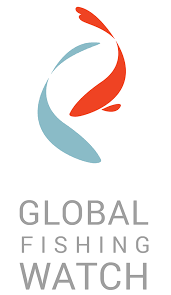





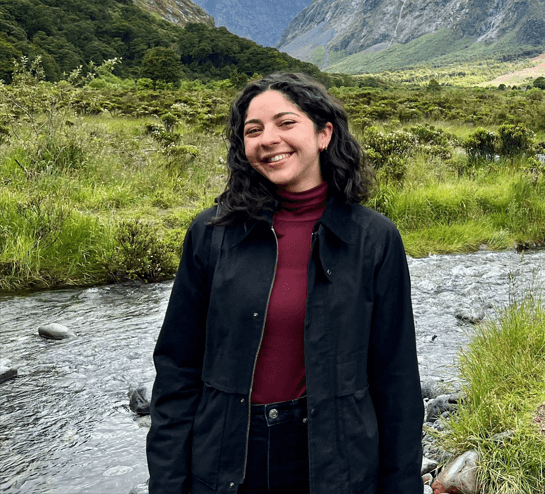


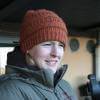

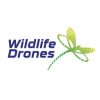









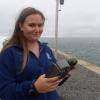





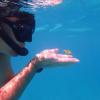





10 April 2024 5:28pm
Alas I have no recommendations for you, but I want to say kudos for pursuing a no-trace approach. Granted the impact of a handful of tracking tags being discarded is way down the list of global pollution sources by impact, but it's good (in our field) to lead by example.